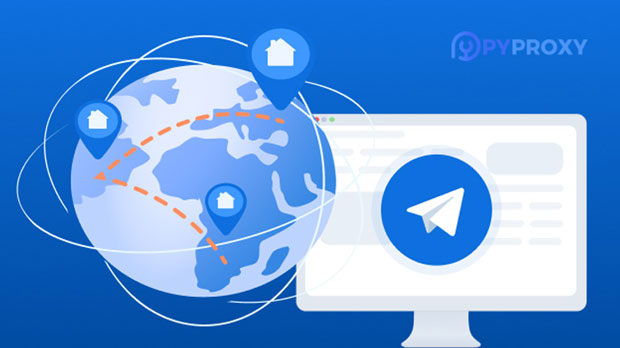Residential Proxy IP in AI Training Data Collection?
In the rapidly advancing field of artificial intelligence (AI), the accuracy and diversity of training data play a crucial role in developing effective algorithms and models. One method of obtaining high-quality training data is by using residential proxy IPs. These proxies offer a legitimate way of mimicking human activity on the internet, providing AI models with data that reflects real-world user interactions. By using residential proxies, AI training can benefit from access to a broader range of data sources, ensuring a more comprehensive dataset. In this article, we will explore the significance of residential proxies in AI training data collection, their advantages, and the impact they have on improving the training process. Understanding the Role of Residential proxy ipsResidential proxy ips are real IP addresses assigned by Internet Service Providers (ISPs) to households. Unlike data center proxies, which are often flagged for suspicious activity due to their origin from data centers, residential proxies are less likely to be detected as proxies. This makes them an essential tool in AI training, where diverse, high-quality data is needed for various applications like natural language processing, computer vision, and recommendation systems. Residential proxies allow AI systems to gather data from a wide range of websites and services, providing realistic insights into user behaviors and trends that are vital for accurate machine learning.The Importance of Data Quality in AIAI models are heavily reliant on the quality of data used during training. High-quality, diverse datasets ensure that the AI model can generalize well and perform effectively in real-world scenarios. Inaccurate or biased data can lead to flawed models that fail to recognize patterns accurately, which can have significant consequences, especially in critical fields such as healthcare, finance, and autonomous driving. Residential proxy IPs contribute to the gathering of diverse and representative data from various sources, which in turn enhances the overall quality of the dataset. This enables AI models to be more adaptable, improving their ability to handle a wide variety of real-world situations.How Residential Proxies Enhance AI Training Data CollectionResidential proxies facilitate AI training data collection in several ways. First, they allow for the collection of large-scale datasets without risking IP bans or restrictions. Many websites have mechanisms to detect and block automated scraping, but by using residential proxies, AI systems can bypass these measures. The use of real IP addresses ensures that the requests appear as if they are coming from legitimate users, thus avoiding detection and ensuring continuous access to valuable data.Furthermore, residential proxies enable the collection of geo-targeted data. Since these proxies are associated with different locations, AI systems can gather region-specific data, which is crucial for training models that need to account for cultural differences, language nuances, and regional behaviors. For example, an AI system trained to recognize shopping preferences may require data from users in different countries to improve its accuracy.Additionally, residential proxies allow for continuous, non-disruptive data collection. AI training often requires data to be gathered over extended periods, and residential proxies help ensure that the process can be carried out without interruptions. The proxies make it possible to collect data 24/7, which accelerates the AI training process and improves model efficiency.Applications of Residential Proxies in Various AI DomainsThe application of residential proxy IPs spans across several AI domains, each benefiting from the increased diversity and accuracy in data collection.1. Natural Language Processing (NLP): Residential proxies help collect text data from various online sources, including social media platforms, forums, and news sites. This data is crucial for training NLP models to understand language patterns, slang, and cultural references. By using residential proxies, AI systems can access a wide range of content from different demographics, ensuring that the NLP models can accurately interpret and generate human-like language.2. Computer Vision: For AI systems focusing on computer vision, data diversity is essential to train models that can recognize objects, faces, and scenes in different environments. Residential proxies allow for the collection of images and videos from a variety of websites, ensuring the dataset reflects real-world variations in lighting, angles, and other visual factors. This enhances the accuracy of computer vision models, particularly in applications such as facial recognition and autonomous driving.3. E-commerce and Recommendation Systems: Residential proxies enable AI models to collect product information, customer reviews, and browsing behaviors from e-commerce sites. This data is used to train recommendation systems that suggest products to users based on their preferences. By using residential proxies, AI systems can access data from different regions, ensuring that the recommendation algorithms are tailored to diverse customer needs.4. Sentiment Analysis and Social Media Monitoring: In the realm of sentiment analysis, residential proxies allow AI models to collect real-time social media data. By accessing posts, comments, and reviews across various platforms, the AI can assess public sentiment on a wide range of topics. This is particularly useful for businesses, brands, and political entities that need to monitor public opinion and adjust their strategies accordingly.Challenges and Considerations in Using Residential Proxies for AI TrainingWhile residential proxies offer several benefits, there are also challenges and considerations that must be addressed. One challenge is the ethical use of proxies. When collecting data from the internet, it is crucial to ensure that privacy and data protection regulations are followed. AI developers should avoid scraping personal or sensitive information without consent, as this could lead to legal issues.Another consideration is the cost associated with using residential proxies. While they are effective for large-scale data collection, the costs can add up, especially if continuous access to a large pool of proxies is required. Businesses and AI developers need to weigh the benefits against the costs to ensure a viable approach to data collection.Finally, the quality of the proxy pool is critical. Using a pool with a high turnover of IP addresses can result in reduced success rates and inefficient data collection. Therefore, selecting a reliable and well-maintained proxy service is essential to ensure the effectiveness of the training process.Conclusion: The Future of Residential Proxy IPs in AIResidential proxy IPs are a powerful tool in the field of AI training, providing the means to collect diverse, high-quality data from a variety of online sources. They enhance the quality of training data, ensure continuous data collection, and allow for geo-targeted data collection, all of which contribute to the development of more accurate and robust AI models. While there are challenges associated with their use, including ethical concerns and costs, the advantages they offer in terms of data quality and diversity are undeniable. As AI continues to evolve, the role of residential proxies in training data collection is likely to expand, offering new opportunities for developing smarter, more efficient AI systems.
2025-02-05

























































